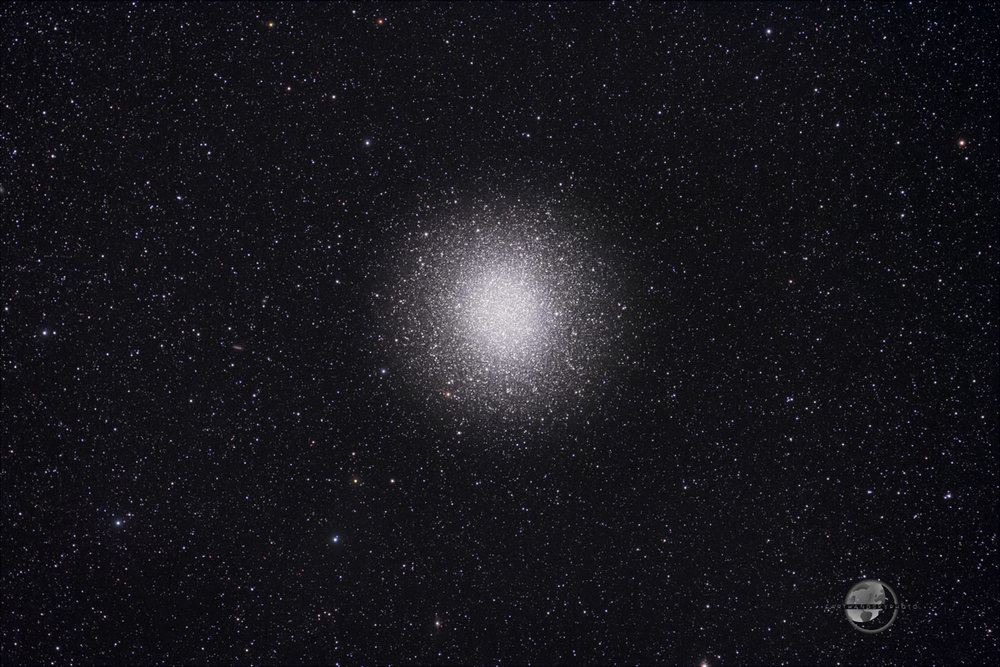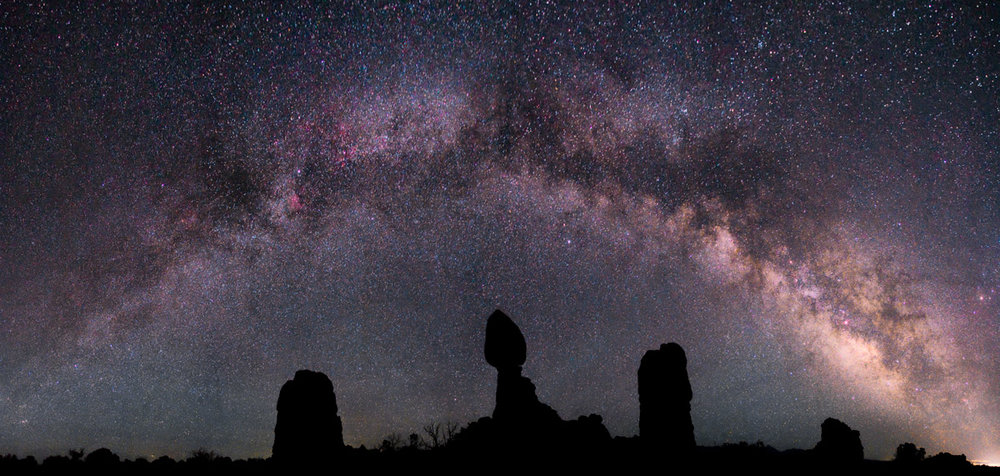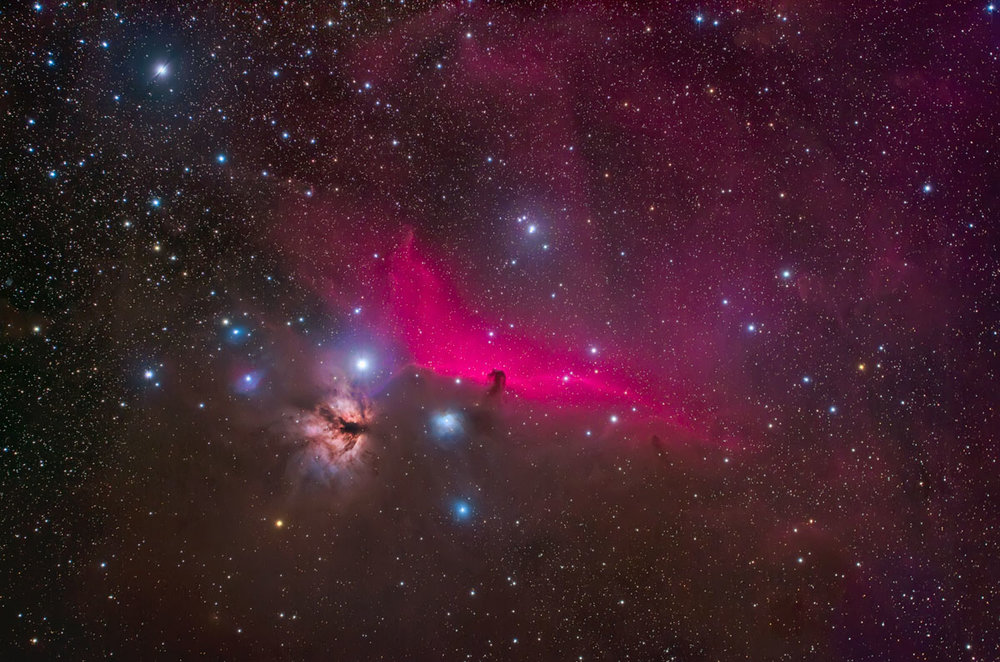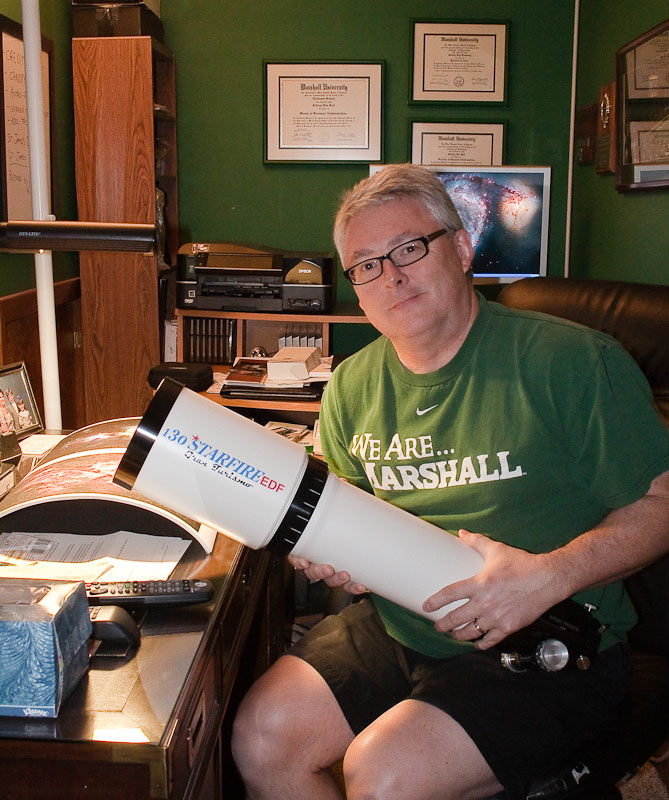 Omega CentauriThe grand-daddy of them all. The globular cluster in Centaurus is the biggest and brightest in the Milky Way Galaxy. It is estimated that over 10 million stars are rotating around the cluster's core. The cluster is designated as NGC 5139 on star charts and lies over 18 thousand light years away. The cluster is 150 light years across and is estimated to be over 12 billion years old! It is a glorious sight in a telescope and is best viewed from southern latitudes. This image was taken during the 2010 Winter Star Party in the Florida Keys.
Omega CentauriThe grand-daddy of them all. The globular cluster in Centaurus is the biggest and brightest in the Milky Way Galaxy. It is estimated that over 10 million stars are rotating around the cluster's core. The cluster is designated as NGC 5139 on star charts and lies over 18 thousand light years away. The cluster is 150 light years across and is estimated to be over 12 billion years old! It is a glorious sight in a telescope and is best viewed from southern latitudes. This image was taken during the 2010 Winter Star Party in the Florida Keys.
Technical details: Images were acquired with a modified Canon T1i on a Takahashi 85 FSQ with focal reducer. The tracking mount used was an Astro-Physics Mach1 GTO. Images were converted in Adobe Light Room 3.0, combined with DeepSky Stacker, and enhanced in Adobe Photoshop CS5. There are approximately 60 images combined with varying ISOs to obtain the final image.
The image may be seen in larger portfolio presentation in the Color Astrophotography Gallery.



